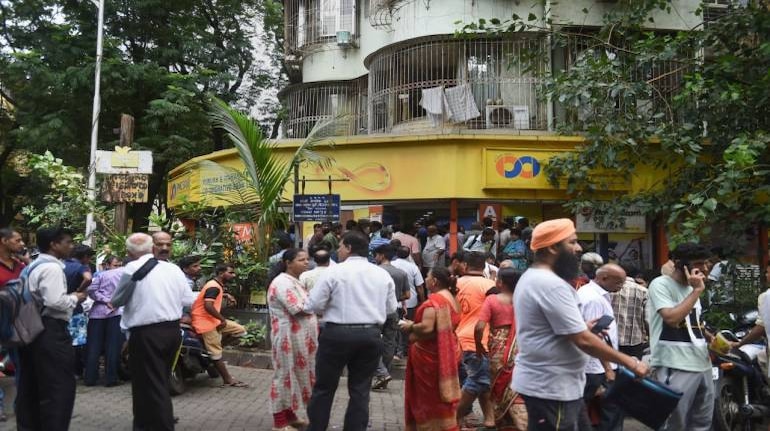
A total of 27 small-sized cooperative banks were liquidated in the past five years, while 42 cooperative banks were closed on account of mergers during this period, minister of state for finance Bhagwat Karad informed Parliament on July 26.
As per government data, 10 cooperative banks were liquidated in the previous financial year, doubling from a year earlier. Maharashtra accounted for seven of the 10 cooperative banks liquidated in FY22, among them Shivajirao Bhosale Sahakari Bank, Independence Cooperative Bank and Mantha Urban Cooperative Bank.
During FY22, a total of 11 cooperative banks were shut on account of mergers as against none in the year before that.
The highest number of bank closures on account of mergers took place in FY20, government data showed. Of the 18 cooperative banks that were shut on account of mergers in FY20, 13 District Central Cooperative Banks (DCCB) in Kerala were de-registered after their merger with Kerala State Cooperative Bank.
In response to a question on safeguards for depositors’ money in case of bank closures, the minister said the Reserve Bank of India’s wholly owned subsidiary Deposit Insurance and Credit Guarantee Corporation (DICGC) insures customers’ bank deposits up to Rs 5 lakh in case of liquidation.
“Accordingly, if a bank fails/gets liquidated, the DICGC is liable to pay to each depositor through the liquidator, an amount of deposit up to Rs 5 lakh as insurance cover, for both principal and interest amount held by depositor in the same right and same capacity at all the branches of a bank taken together,” he added.
Why is liquidation rising?
Experts are of the view that stress in cooperative banks remains elevated with dwindling returns on assets and on equity, and net interest margin metrics.
The RBI, in its Financial Stability Report in June, said it conducted stress tests on a select set of urban cooperative banks (UCBs) to assess credit risk, interest risk and liquidity risk, based on their reported financial positions as of March 2022.
The results showed that a few UCBs failed on four of the five risk parameters, even under the baseline scenario. Further, the impact of credit default risk was higher than the credit concentration risk in all three scenarios, the RBI said. The impact of shock to the trading book and the banking book was minimal, while liquidity shocks impacted the largest number of UCBs, it added.
“Despite the rich history of the cooperative movement, the market share of UCBs in the banking sector has been gradually declining and today stands at around 3 per cent,” the RBI’s expert committee on UCBs said in a report in August last year.
Further, even as 94 percent of the entities in the banking sector were UCBs as on March 31, 2020, their combined share in the banking sector’s overall deposits and advances was at 3.24 percent and 2.69 percent, respectively, the RBI said.
“There are many lender groups – NBFCs, affordable home loan-focused HFCs, MFIs, SFBs, private and public banks – focusing on PSL (priority sector loans) as their book size increases year after year. Fintech firms are also focusing on the segment targeted by UCBs,” said Aniket Dani, director at CRISIL Ratings.
He added that players with economies of scale and lower cost of funds that are agile with their digital processes have been able to gain more market share, making it difficult for some UCBs to compete.
UCBs will have to focus on niche product segments and invest in technology to improve efficiency, Dani said, adding the UCBs may even have to become loan originators for some large lenders in specific segments.
“Due to changes in the existing Banking Regulations Act coupled with the rise in the ratio of NPAs (non-performing assets) and a fall in investments, the liquidation of UCBs appears to be more relevant than ever,” said Sonam Chandwani, managing partner at KS Legal and Associates.
Dual regulation
Another significant challenge for UCBs is dual regulation – they are overseen by both the state registrar of societies and the RBI. This does not allow the RBI to scrutinise the accounts and exposures of UCBs as thoroughly as it does with other fully regulated lenders, experts said.
This leaves scope for complacency, as witnessed during the fraud at Punjab and Maharashtra Cooperative Bank, where depositors struggled to withdraw their basic life savings for prolonged periods.
“The RBI had regulatory oversight on the banking activities of UCBs and DCCBs and its powers were limited to some extent, which impacted its ability to take timely action in case of irregularities,” said Sanjay Agarwal, senior director at CARE Ratings. “Further, the non-performance of UCBs as per expectations can potentially be attributed to political intervention, fraud, absence of requisite skill sets among employees and top management, capital raising challenges along with increased competition form NBFCs and fintechs.”
Amit Aggarwal, a partner at SNG, alleged that many UCB management officials were involved in unscrupulous activities.
“Of late, UCBs have been seen to engage in such transactions where for personal benefit of one or more senior management members, lending is done to entities that are not eligible or entitled for those loans, ” he said.
Discover the latest Business News, Sensex, and Nifty updates. Obtain Personal Finance insights, tax queries, and expert opinions on Moneycontrol or download the Moneycontrol App to stay updated!
Find the best of Al News in one place, specially curated for you every weekend.
Stay on top of the latest tech trends and biggest startup news.